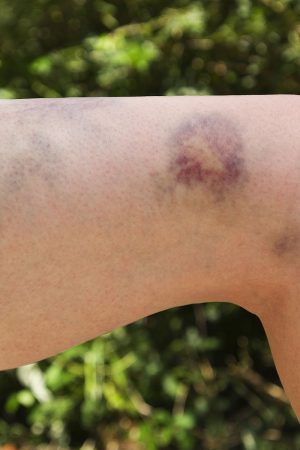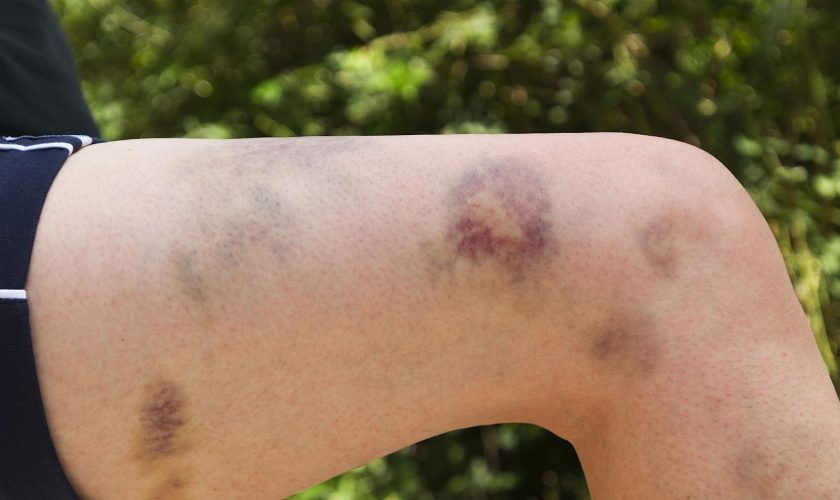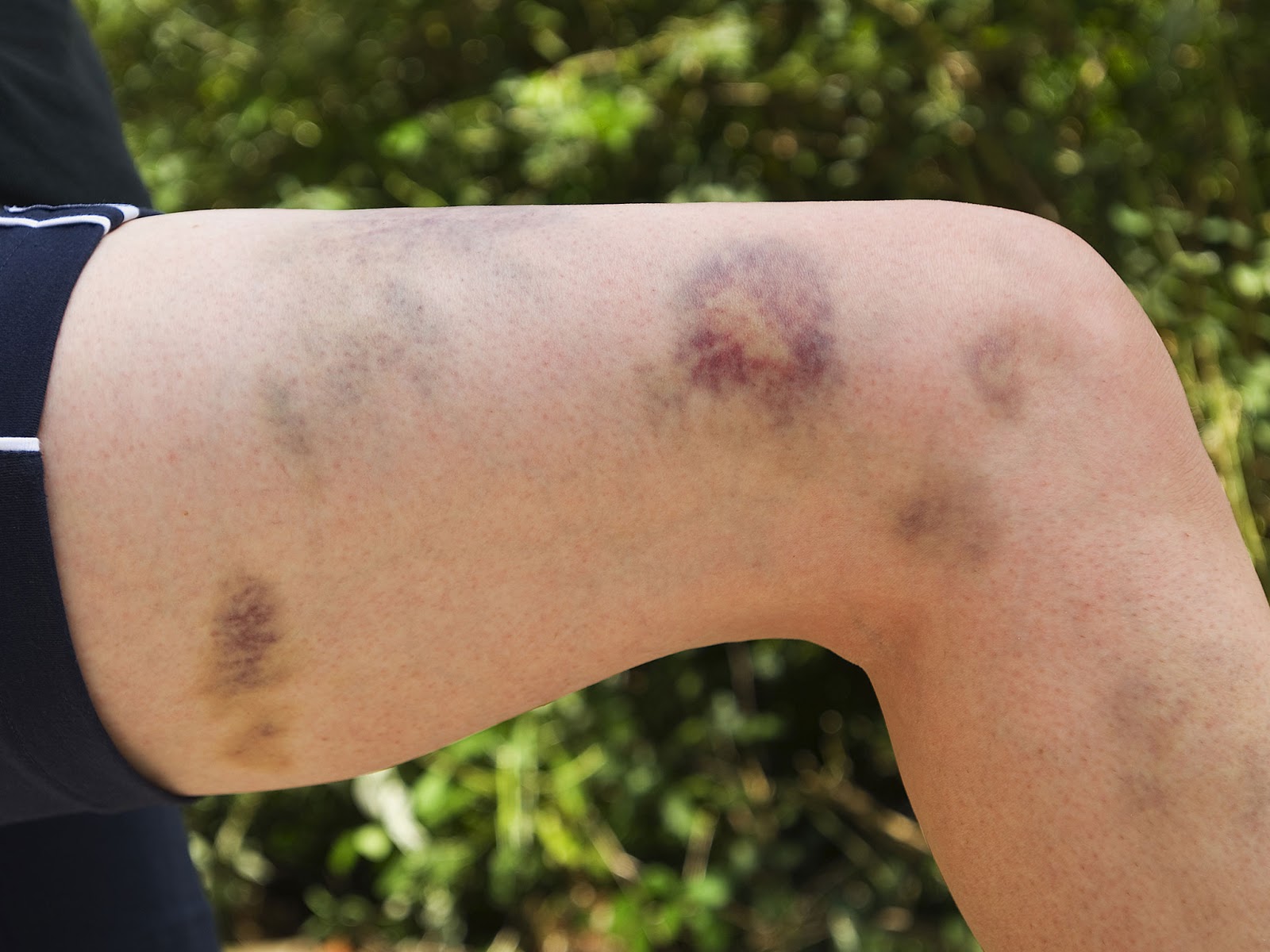A bruise is a common skin discoloration that results from the breakage of tiny blood vessels leaking under the skin after a traumatic injury. Blood from damaged blood vessels beneath the skin collects near the surface to appear as what we recognize as a black and blue mark. This mark is from skin discoloration by red blood cells and their contents. A bruise is also known as a contusion.
Causes
People typically get bruises when they bump into something or when something bumps into them.
- Bruises can occur in some people who exercise vigorously, such as athletes and weight lifters. These bruises result from microscopic tears in blood vessels under the skin.
- Unexplained bruises that occur easily or for no apparent reason may indicate a bleeding disorder, especially if the bruising is accompanied by frequent nosebleeds or bleeding gums.
- Often, what are thought to be unexplained bruises on the shin or the thigh, for example, actually result from bumps into a bedpost or other object and failing to recall the injury.
- Bruises in elderly people frequently occur because their skin has become thinner with age. The tissues that support the underlying blood vessels have become more fragile.
- Bruises are also more common in those taking medicine to thin the blood.
How can I reduce bruising?
Treat bruises on your skin by limiting the bleeding. You can do this by cooling the area with a cold compress (a flannel or cloth soaked in cold water) or an ice pack wrapped in a towel.
To make an ice pack, place ice cubes or a packet of frozen vegetables in a plastic bag and wrap them in a towel. Hold this over the area for at least 10 minutes. Do not put the ice pack straight on to your skin as this will be too cold and could hurt.
Over-the-counter painkillers such as paracetamol or ibuprofen may help relieve the pain associated with bruising.
Remedies
Speed the paling process
Apply ice as soon as possible. If you cool the blood vessels around the bruised area, less blood will leak out into the surrounding tissue. Many flexible ice packs are available, specifically designed for injuries, and most rough-and-tumble athletes have the foresight to keep a couple of them in the freezer. If you’re not so equipped, soak a cloth in ice-cold water and lay it over the bruise for 10 minutes. Or use a bag of frozen vegetables wrapped in a towel. Take it off after 10 minutes, and wait 20 minutes or so before you reapply the ice pack so you don’t overchill the skin underneath.
Turn up the heat
After cooling the bruise for 24 hours, start applying heat to bring more circulation to the area and help clear away the pooled blood. Use an electric heating pad for 20 minutes several times a day. Be sure to follow the instructions on the heating pad: To avoid burns, it should go on top of, not under, the bruised limb.
Herbal Tea Compress
You can also use a cold tea compress to soothe the affected area and reduce swelling.
Arnica
The herb arnica can help decrease inflammation, reduce pain, and increase circulation to the area around the bruise.
Bromelain
Bromelain is a protein-digesting enzyme present in pineapples. It has strong anti-inflammatory properties and studies have found that it helps heal bruises quickly. It also has been found useful for treating bone bruises.
Comfrey
Comfrey is a centuries-old remedy for wounds, sprains, and bruises. You can use comfrey tea as a compress, initially as a cold compress for one or two days and then as a warm compress.
Vitamin K
Vitamin K helps decrease bruising as it regulates blood clotting.
St. John’s Wort
St. John’s wort has anti-inflammatory properties that can help heal a bruise. It also works as an analgesic for pain relief.
Essential Oils
After a couple of days, massaging the bruised area with a blend of essential oils will increase circulation and help disperse the pooled blood.
Apple Cider Vinegar
Being a natural anti-inflammatory, apple cider vinegar can help heal bruises. Use it for a few days until you see improvement.
Lemon
Lemon contains vitamin C which is very useful in treating skin problems. This could be a little painful treatment for bruises, but it is the most effective one. Apply lemon juice on your bruise and gently rub for about 5 minutes. It will soon heal the bruises.
Chocolate
Chocolates contain cocoa bio active compounds that have anti inflammatory property that prove very beneficial for skin health.
Castor Oil
Rubbing castor oil on the bruise not only reduces it, but also prevents the skin from peeling off once the bruise is gone.
Witch Hazel
The active ingredients found in witch hazel have astringent properties which prove useful to cure bruises.



